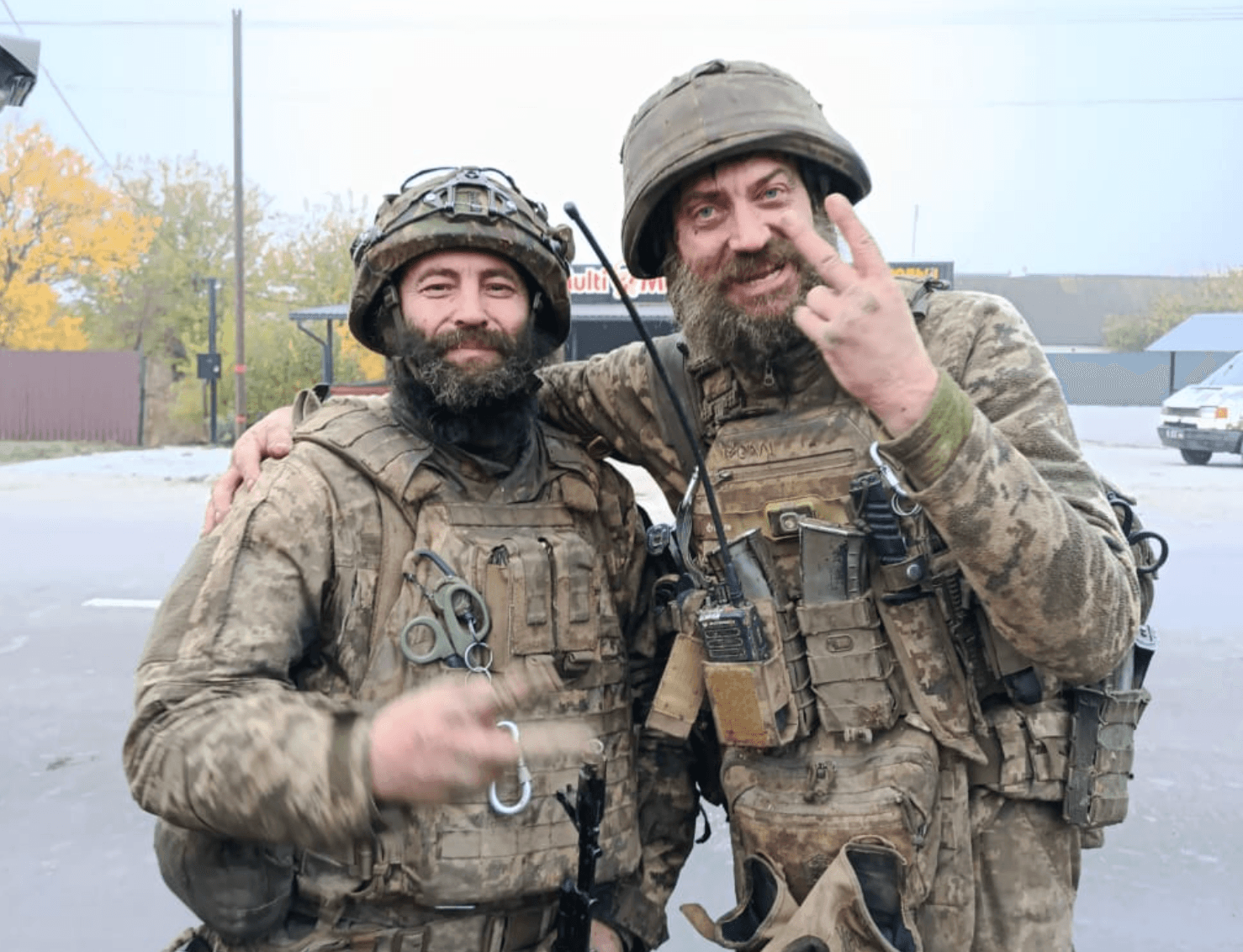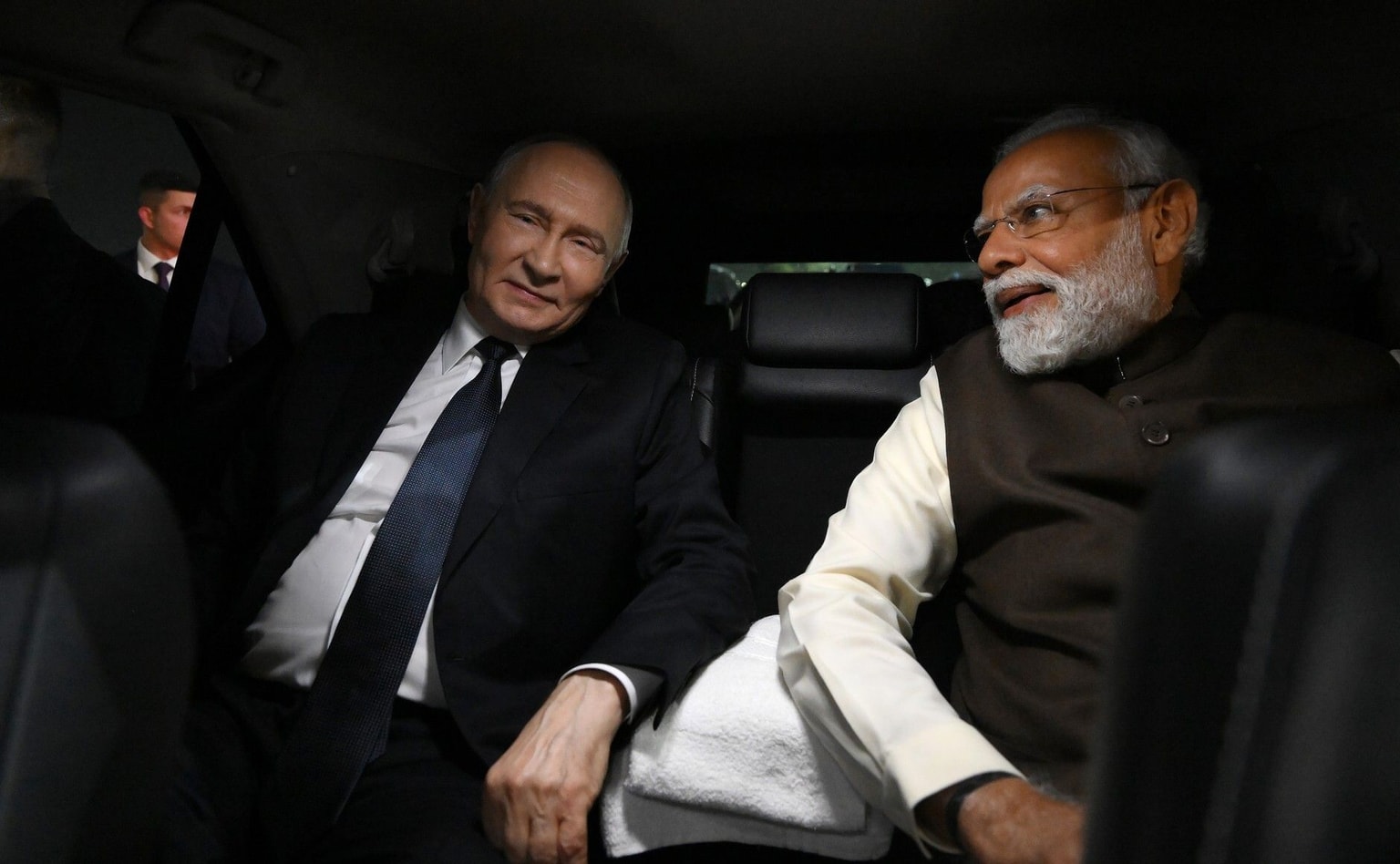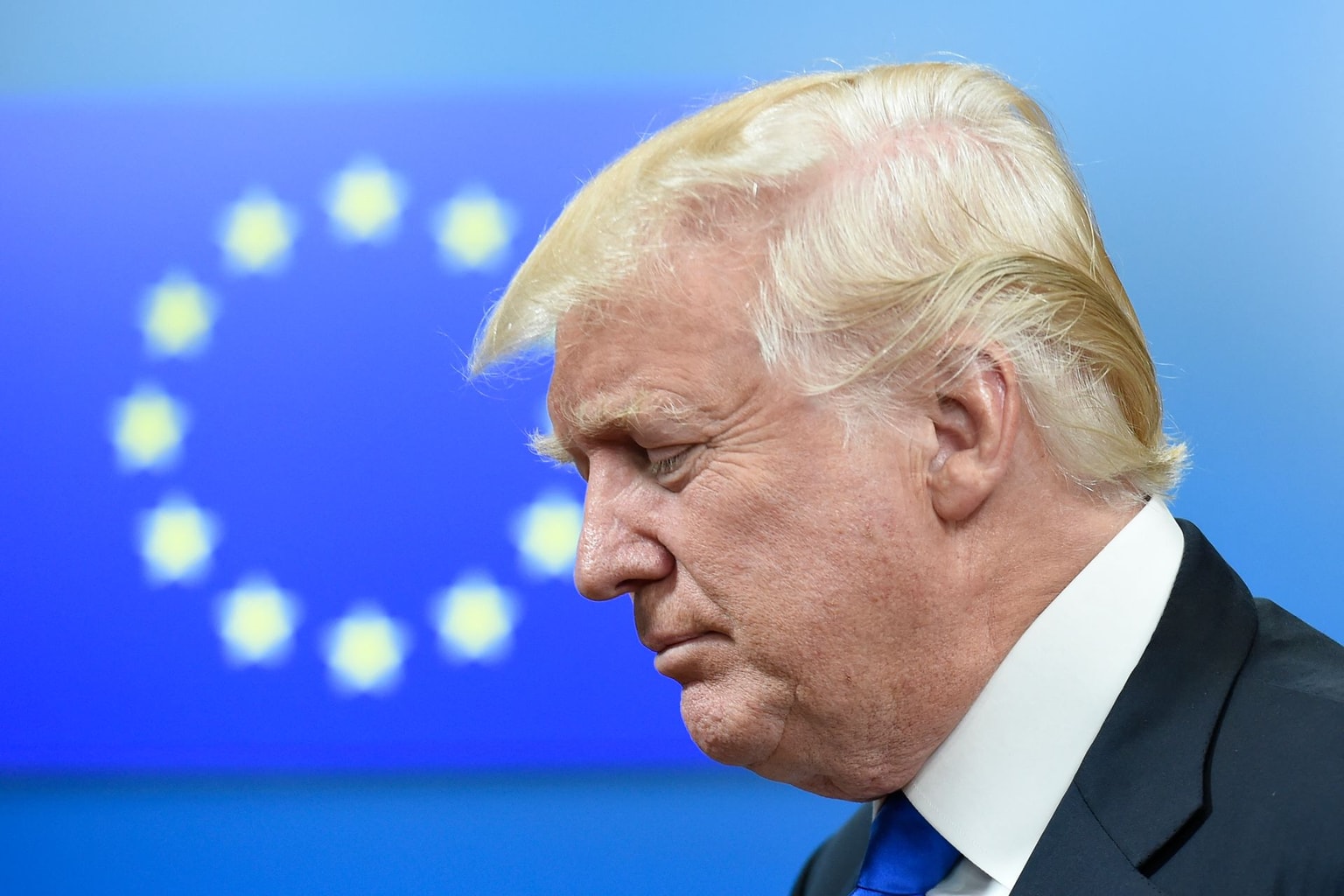A scene from deadly clashes between pro-Ukrainian and pro-Russian activists that led to a fire in the Trade Unions Building in Odesa, Ukraine, on May 2, 2014. Over 40 people were killed that day, two pro-Ukrainian activists from gun shots, and more than 30 in the fire. (Maksym Voytenko/Anadolu Agency/Getty Images)
On May 2, 2014, a tragic incident occurred in the southern Ukrainian port city of Odesa, becoming one of the most widely exploited narratives in Russian propaganda.
That day, as more than 1,000 Ukrainian activists gathered in the city to show support for the Ukrainian government, a group of pro-Russian protestors showed up to meet them — many armed with clubs, axes, and guns.
They began violently attacking the Ukrainian activists, two of whom were shot and killed as the events unfolded. The activists and those outraged by the attack began to fight back.
"It began with them throwing cobblestones at us," Victoria Sybir, a former secretary of a volunteer civilian defense group formed in Odesa to repel attacks on protesters, told the Kyiv Independent, recalling the events back then.
"We fought back as we could, but then two (Ukrainian activists) were killed after being shot," she said.
As tensions mounted, the Ukrainian activists dismantled a tent encampment set up by the other side, forcing the pro-Russian group to barricade themselves in Odesa's Soviet-era Trade Unions Building.
It was from there that the pro-Russian protestors began throwing Molotov cocktails and explosives to fight off those standing outside, the European Court of Human Rights (ECHR) found in an investigation following the event. The activists began launching Molotov cocktails at the building in response.
The building caught fire, resulting in the deaths of 42 people, most of them pro-Russian protestors. Another six people were killed that day during the clashes.
Since the fire, Russia has continued to use the tragic events in its propaganda. From the start, Russian media alleged that the real number of casualties in the fire was much higher, and many conspiracy theories were circulated to exploit the tragedy, a 2014 Parliamentary Assembly of the Council of Europe (PACE) committee report found.
The events of May 2, 2014, also figure in Russia's justification for its 2022 full-scale invasion of Ukraine, falsely portraying the events as a "massacre, during which aggressive 'Ukrainian Nazis' had locked peaceful pro-federalists in the Trade Union Building and had burnt them alive," the European court said in its findings of the events.

A common refrain in Russian propaganda used to legitimize its aggression against Ukraine is the baseless and fabricated notion that Ukrainians are "Nazis" and that the Ukrainian government is a "Nazi regime."
The scene — while a flashpoint in the political chaos in Ukraine at the time — was no isolated event. As Ukraine's EuroMaidan Revolution evolved from a small protest movement to a full-blown uprising from late 2013 through the early months of 2014, Russia seized on the tense moment to sow unrest in the country.
From the outset of the revolution, the Russian-linked violent groups that would become known as the "AntiMaidan" began appearing at protests, both in Kyiv, the epicenter of the EuroMaidan, and in other cities across Ukraine, including Odesa, the eastern cities of Donetsk and Luhansk, and the northeastern city of Kharkiv.
Russia was found to be behind some of the AntiMaidan groups around the country, according to a PACE fact-finding mission in 2014.
The revolution reached a bloody climax in February 2014, when security forces backing pro-Russian President Viktor Yanukovych opened fire on protestors, killing over 100 people.
Yanukovych shortly thereafter fled to Russia, and Moscow quickly capitalized on the power vacuum by annexing Crimea and arming Russian-controlled proxy forces in Ukraine's eastern Luhansk and Donetsk oblasts.
Russia similarly tried to foment anti-government, Russia-sympathetic protest movements in Kharkiv and Odesa in the months after the revolution, but to little avail. Local activists formed civil defense groups that fought back against — at times violently — Russia's moves to recreate its success in Donetsk and Luhansk with the help of proxies and local collaborators.
Moscow's attempts in Odesa were not insignificant. The Kremlin had deployed its agents to undermine local authorities, backed street clashes, and fueled the spread of disinformation about the revolution. At the time, roughly 30% of Odesa's population identified as ethnic Russians. Some local officials also held sympathetic views toward Russia.
In an interview with Radio Svoboda, Serhii Dibrov, a Ukrainian reporter and expert from the public organization "The May 2 group," said the Russian consulate in Odesa was one of the biggest in the world, used as a getaway for Russian money lobbying its interests in the oblast through local political parties, media, and NGOs.
The European Court of Human Rights concluded in a 2025 ruling that pro-Russian activists in Odesa were aided by some local authorities and police during the attack on the rally.
The role of the local government in the day's events
During the clashes in Odesa on May 2, dozens of policemen were found to have stood idly by in a line with their backs to the attackers, enabling them to pull out firearms freely, the court ruled..
Some police even ignored the fact that protestors had been shot.
"A pro-Russian activist wearing a balaclava, who was standing behind and, at times, next to the police, was seen firing numerous shots in the direction of pro-unity supporters" around the time when the first pro-Ukrainian activist was shot, according to the ECHR investigation.
After the fires in the building started, the local State Emergency Service department ignored numerous calls to the building for about half an hour per their chief's order, who was present at the scene.
Instead of waiting for first responders to arrive at the scene of the fire, some activists jumped out of the building's windows. Others were evacuated with the help of activists outside.
After the fire was extinguished, the local police arrested sixty-three people who were still in the building.
Two days later, on May 4, several hundred pro-Russian activists stormed the local police building where the arrested protesters were held. The acting regional police chief, who helped the pro-Russian movement and subsequently fled to Russia, ordered their immediate release.
International observers found that Ukrainian authorities, many of whom were part of Yanukovych's pro-Russian Party of Regions, did little at the time to investigate the events and prosecute those responsible, partly explained by Ukraine's tumultuous transition after the revolution.
The ECHR ruled on March 13, 2025, that the Ukrainian government failed to prevent and properly investigate the deaths of 48 people in the clashes.
The court found that there was not enough conclusive evidence to prove that Russia had orchestrated the clashes — "especially given the covert nature of the alleged involvement." It acknowledged, however, Russia's involvement in instigating the violence through information warfare and, possibly, Russian-controlled saboteurs on the ground.
"The relevant (Ukrainian) authorities failed to show sufficient thoroughness and diligence in initiating and/or pursuing the investigations (of the clashes)," said a 2015 report of the International Advisory Panel of the Council of Europe cited by the court.
















